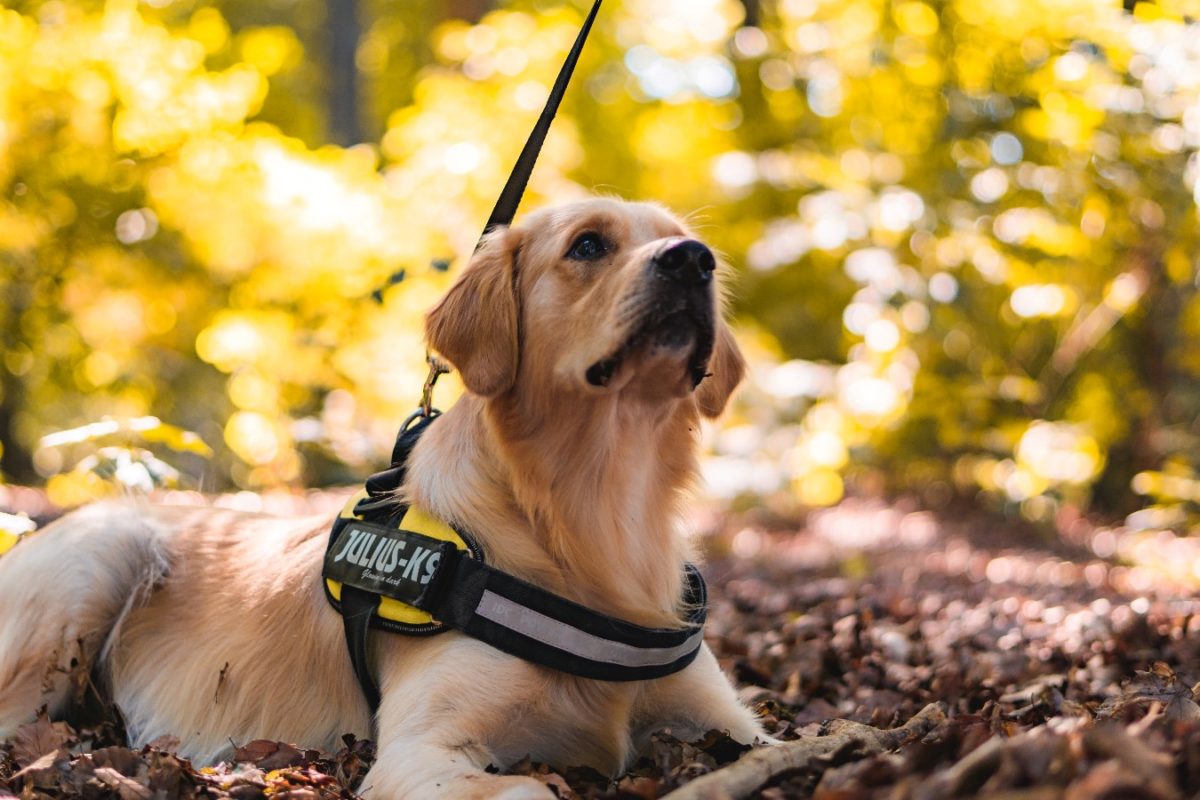Everything, Dogs, Training
Jobs for Dogs: Service and Therapy Dogs
They work without a contract and they don’t receive salaries, but they never complain or go on strike. We rely on them and they thrive under the responsibility we give them.
Service dogs, also called assistance dogs, are trained to meet the disability-related needs of people with disabilities. Some service dogs are bred for a particular job, while others come from animal shelters and dog pounds. They’re placed with a foster family to learn basic obedience and socialization, and when they’re ready, they spend several months or more in training for their job. After their training, they’re certified and matched with a client.
US federal law permits service dogs to accompany their handlers in public places where dogs are not normally allowed. Having service dogs with them gives people with disabilities freedom to live more normal lives.
While therapy dogs don’t have the same rights as service dogs, they must also be certified, and they play a valuable role in people’s health and well-being.
In this article:
- Guide dogs for the blind and visually impaired
- Hearing dogs for the deaf and hearing impaired
- Seizure alert and response dogs
- Mobility assistance dogs
- Therapy dogs
Guide dogs for the blind and visually impaired
Guide dogs, also called seeing eye dogs, function as the eyes for the blind and visually impaired. With the handle of a guide dog’s harness to hold, blind and visually-impaired people regain their mobility and independence. They can walk confidently knowing that their guide will lead them around obstacles and overhead dangers and will stop at bumps, curbs, and streets.
While they’re working, guide dogs ignore distractions that dogs naturally want to explore, such as other animals or smells, and they concentrate on guiding their handlers safely to their destinations. They obey their handler’s commands, but they’re also trained in intelligent disobedience — they assess the situation themselves and disobey if it’s unsafe to obey, such as when a car is coming.
Hearing dogs for the deaf and hearing impaired
Dogs have been trained as hearing dogs for deaf and hearing-impaired people since the 1970s. These dogs alert their handlers to sounds that their handler can’t hear — doorbells, phones, alarm clocks, crying babies, and smoke alarms, for example. Hearing dogs not only let their handlers know when they hear a sound, but also guide their handler to the sound.
Seizure alert and response dogs
Some dogs have an innate ability to detect when people are going to have an epileptic seizure and the disposition to alert these people. Since the 1990s, dogs identified with this ability have been trained to alert their handlers when they sense an oncoming seizure, sometimes up to hours beforehand. This warning gives people who are prone to seizures time to take medication to block the seizure, find a place where they can avoid injury, or call for help.
If a seizure happens, these service dogs can block their handler’s fall during drop seizures to prevent serious injury, and they stay with their handlers to protect them. They can be taught to press a button on a phone that automatically dials 911 and to bark when they hear a voice over the speaker. They can also help their handler get up after a seizure.
Mobility assistance dogs
Mobility assistance dogs help people with mobility limitations — those who have had a stroke or a spinal cord injury, and people with multiple sclerosis, muscular dystrophy, or Parkinson’s disease, for example. They’re the arms and legs for these people.
Mobility assistance dogs can be taught to open and close doors, pick up or bring things identified by name, push access or elevator buttons, help people get dressed and undressed, provide a brace for people getting in and out of wheelchairs and beds, assist people when they fall, and more. Like seizure alert dogs, they can press a button to get help, and they may go to get assistance if necessary.
Therapy dogs
They work in nursing homes, rehabilitation facilities, hospitals, detention facilities, and other institutions. They don’t need to be a specific breed or have any specific skills except to be sociable and well behaved. Therapy dogs do their jobs just by visiting people.
Many people in institutions have or had pets, and a visit from a therapy dog is the next best thing to being with their own pet. Whether or not people have or had pets of their own, visits from dogs provide a change of routine, a conversation starting point, a reason to use their arms and hands when they stroke the dog, and often a reduction in blood pressure. Therapy dogs also reach some withdrawn or mentally ill people who have pulled back from the external world.
Therapy dogs don’t have the same legal status as service dogs do. Certification is required for therapy dogs to be allowed to visit people in public institutions; various pet therapy organizations can provide certification. Dog-play.com has a list of links to national and international organizations.


